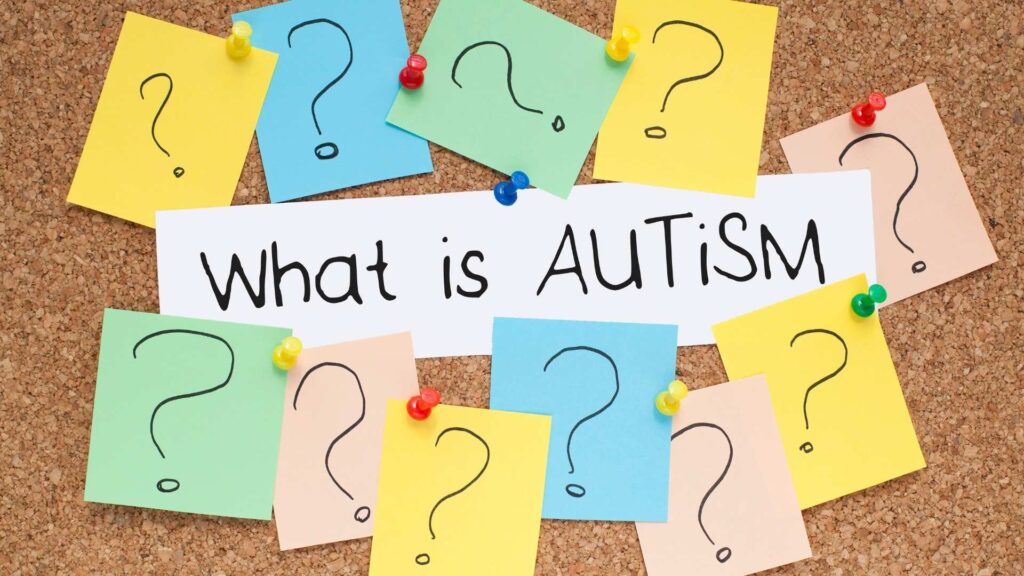Table of Contents
How do you explain autism to children?
It’s a question that many parents ask, especially when their child begins noticing differences in how others behave, communicate, or interact. Whether your child has a classmate, sibling, or friend with autism, or you’re simply fostering empathy and understanding at home, explaining autism to kids can feel overwhelming. But it doesn’t have to be.
With honesty, kindness, and the right approach, discussing autism can lead to meaningful conversations that help children grow into more inclusive and compassionate individuals. In this blog by ABA Centers of Delaware, we’ll explore why this conversation matters and share 10 practical tips to help you explain autism to your child. We’ll also explore how therapies like ABA can support autism awareness and promote positive development in children with autism.
Why Is It Important to Introduce Children to Autism?
We live in a beautifully diverse world, and every child deserves to grow up feeling seen, accepted, and supported. Introducing children to the concept of autism early not only helps them understand neurodiversity but also teaches them empathy, patience, and kindness.
As outlined by the American Psychiatric Association, Autism Spectrum Disorder (ASD) affects how an individual communicates, understands, and interacts with others. These characteristics may manifest differently in each person—some children with autism may have delayed speech, while others may exhibit intense interests or a preference for routines.
When we give children the tools to understand these differences, they’re more likely to respond with curiosity and compassion rather than confusion or judgment. That’s what explaining autism is really about: opening the door to connection.
Helping Children Understand Autism with Kindness
Kids are naturally curious. When they see someone act differently than they expect, they often ask questions. That curiosity is a powerful opportunity.
“Why is my friend so quiet?”
“Why does my classmate flap their hands?”
“Why does my brother get upset when things change?”
These are moments when explaining autism to kids can have a lasting impact. According to Autism Parenting Magazine, 1 in 36 children in the United States is diagnosed with autism. That means the chances of your child encountering someone with autism are high. The way you respond to their questions—calmly, honestly, and kindly—sets the tone for how they’ll engage with others moving forward.
10 Honest Tips Every Parent Needs For Explaining Autism to Kids
Here are ten practical, honest, and age-appropriate ways to explain autism to kids:
1. Start with What They Know: Use familiar situations to build trust. “Remember how your brother doesn’t like loud noises?” These examples help kids connect the idea of autism to real-world experiences.
2. Be Honest and Simple: You don’t need to get technical. Try saying, “People with autism see and feel the world uniquely. That’s just part of who they are.”
3. Explain That Everyone Has Strengths and Challenges: You can say, “Some kids are great at drawing but find it hard to talk to new people. Others love talking but get nervous in loud places.”

4. Use Stories or Books: Children’s books, such as “All My Stripes” or “My Brother Charlie,” offer relatable narratives. Several autism experts recommend these for helping children grasp autism in a friendly way.
5. Highlight the Positive: Let your child know that differences aren’t bad; they make people interesting and unique. “Your friend with autism might not like eye contact, but they’re amazing at building with blocks!”
6. Encourage Questions: It’s completely fine to say, “I’m not sure, but let’s learn together.” Offering this alternative keeps the conversation open and shows that understanding autism is a journey.
7. Model Respectful Language: Use person-first language like “a child with autism” instead of labeling someone as “autistic.” This small shift models kindness and respect.
8. Talk About Communication Differences: Explain that some people with autism might use pictures, devices, or gestures instead of words, and that’s okay. As pointed out in a recent study published in Children, understanding communication styles improves peer relationships.
9. Explain That Sensory Needs Are Real: Loud sounds, bright lights, or scratchy fabrics might be uncomfortable for someone with autism. Use examples like “Imagine hearing your least favorite noise all day long.”
10. Encourage Inclusion: Help your child brainstorm how they can be a good friend. “Can you sit with your sister at lunch?” or “Want to invite your friend to play something he/she likes?”
Explaining autism to kids doesn’t have to be one perfect conversation; it can be a series of small, meaningful moments over time.
How ABA Therapy Encourages Autism Awareness
Applied Behavior Analysis (ABA) therapy is one of the most evidence-based interventions for individuals with autism. It focuses on reinforcing positive behaviors, building communication skills, and promoting independence in a fun, structured, and personalized manner.
Experts at the Open University’s “Understanding Autism” course assure that early intervention plays a key role in helping children with autism thrive. Through ABA therapy, children can develop skills in language, daily routines, social interactions, and emotional regulation.
ABA therapy also supports siblings and peers by teaching them how to better engage with children with autism. These ripple effects help build a more autism-aware environment, not just at home, but also in schools and the broader community.
Building a Future Rooted in Acceptance

When we talk about autism with kids honestly and openly, we build a better, more inclusive world. Children who understand autism grow up to be adults who advocate, include, and celebrate differences. That’s the power of explaining autism—it starts small, but it grows big.
So, the next time your child asks about a classmate who flaps their hands, covers their ears, or doesn’t talk much, lean into that moment. Say, “That’s a person with autism. Let’s learn more about them together.”
If you’re looking for support, guidance, or diagnostic services, ABA Centers of Delaware is here to help. We offer early intervention, personalized ABA therapy, and autism diagnostic evaluations, with no waitlists. Our compassionate team helps children and families thrive with understanding, patience, and proven support.
Contact us today at (844) 855-8517 or schedule an online consultation to know more about how we can help your family to thrive with neurodivergent kids. Let’s raise a generation of children who don’t just know what autism is, but who know how to love and respect those living on the spectrum.








